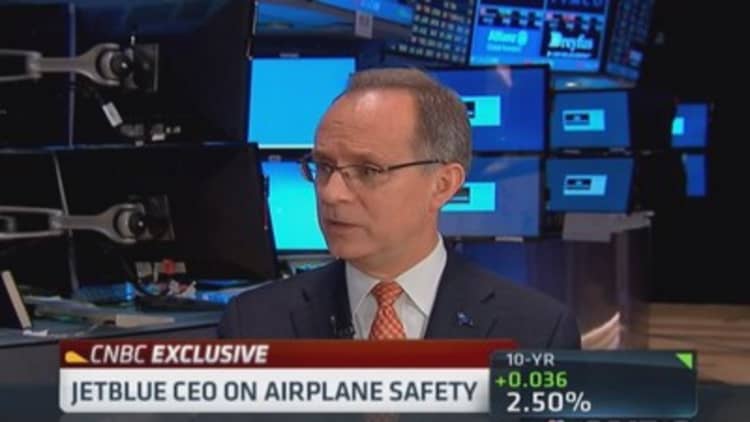Airline insurers are reviewing cover for aircraft involved in hostile acts such as the downing of Malaysia Airlines flight MH17 as the industry faces its most expensive year since the 9/11 attacks in 2001 with annual losses set to pass $2 billion.
Senior insurance brokers have warned that some underwriters are demanding more than threefold increases in premiums in recent days for so-called "war" insurance policies.
Some insurance companies want details of exact flight paths and are considering withdrawing completely from providing certain types of cover for flights over hotspots in the Middle East and parts of Africa, the brokers added.
Read MoreMalaysia Airlines hit by flight cancellations
Fear of soaring claims for airline war policies comes in the wake of recent fighting at Tripoli airport in Libya, which damaged almost two dozen planes, as well as the MH17 disaster, which killed 298. Payouts on war insurance policies alone are expected to reach several hundred million dollars this year.
Airlines are vulnerable to abrupt changes in policy terms of war insurance, which covers physical damage to aircraft from hostile acts. Such policies can be cancelled with just seven days notice.
On top of war insurance, airlines spend several times more in premiums – typically amounting to millions of dollars each for major airlines – on separate coverage known as "all-risk" policies. These policies are likely to see a rise in premiums but nothing like the increase expected for war insurance.
Read MoreDutch mourn first MH17 bodies flown to Netherlands
Malaysia Airlines is likely to face higher-than-average increases, brokers said, especially given the MH17 disaster struck little more than four months after the disappearance of another of its jets.

Besides the Malaysian disasters, plane crashes last week in Mali and Taiwan will also contribute to insurers' losses. All-risk policies cover liability claims, compensation payments to passengers, legal fees and physical damage to aircraft not caused by hostile acts.
Higher premiums would reverse successive years of lower insurance costs for airlines, with premiums almost halving over the past five years, according to brokers, due to a relative absence of losses.
More from the Financial Times:
Images show Russian attacks, says US
BokoHaram kidnaps wife of Cameroon politician
Sankaty pays $1bn for JPMorgan debt
Aviation war insurers including the Lloyd's of London market are facing an annual bill this year several times bigger than their premium income, which totals only about $60 million.
Although some premiums have already risen sharply, however, brokers say they expect most airlines to continue securing insurance with underwriters prepared to fill any gaps in coverage. Lancashire, the Lloyd's insurer, said last week it was planning to take advantage of an expected rise in premium levels.
Brokers expect both liability claims and hull losses to run into several hundred million dollars this year. Attritional losses – caused by more regular damage, such as bird strikes – typically come to about $600 million annually. This would push the total losses for 2014 past $2 billion.
Read MoreUkraine fighting complicates MH17 crash probe
However, the total costs remain uncertain because while physical damage losses can be settled quickly, the liability bill can take several years to finalize.
Compensation paid to relatives depend on several factors, such as the nationalities of passengers and their earnings potential. A relatively small number of Americans killed in the recent disasters should cap the losses.

